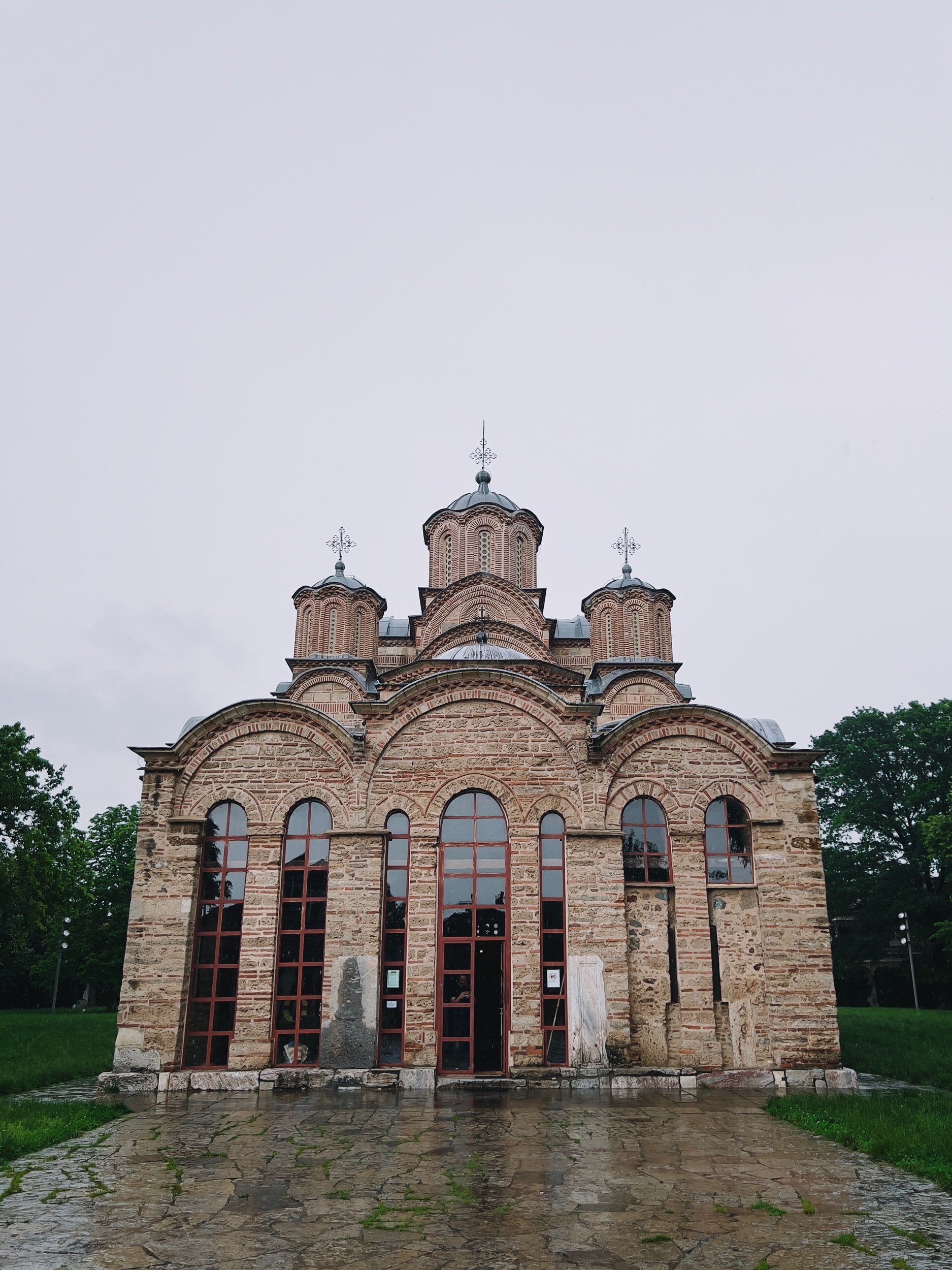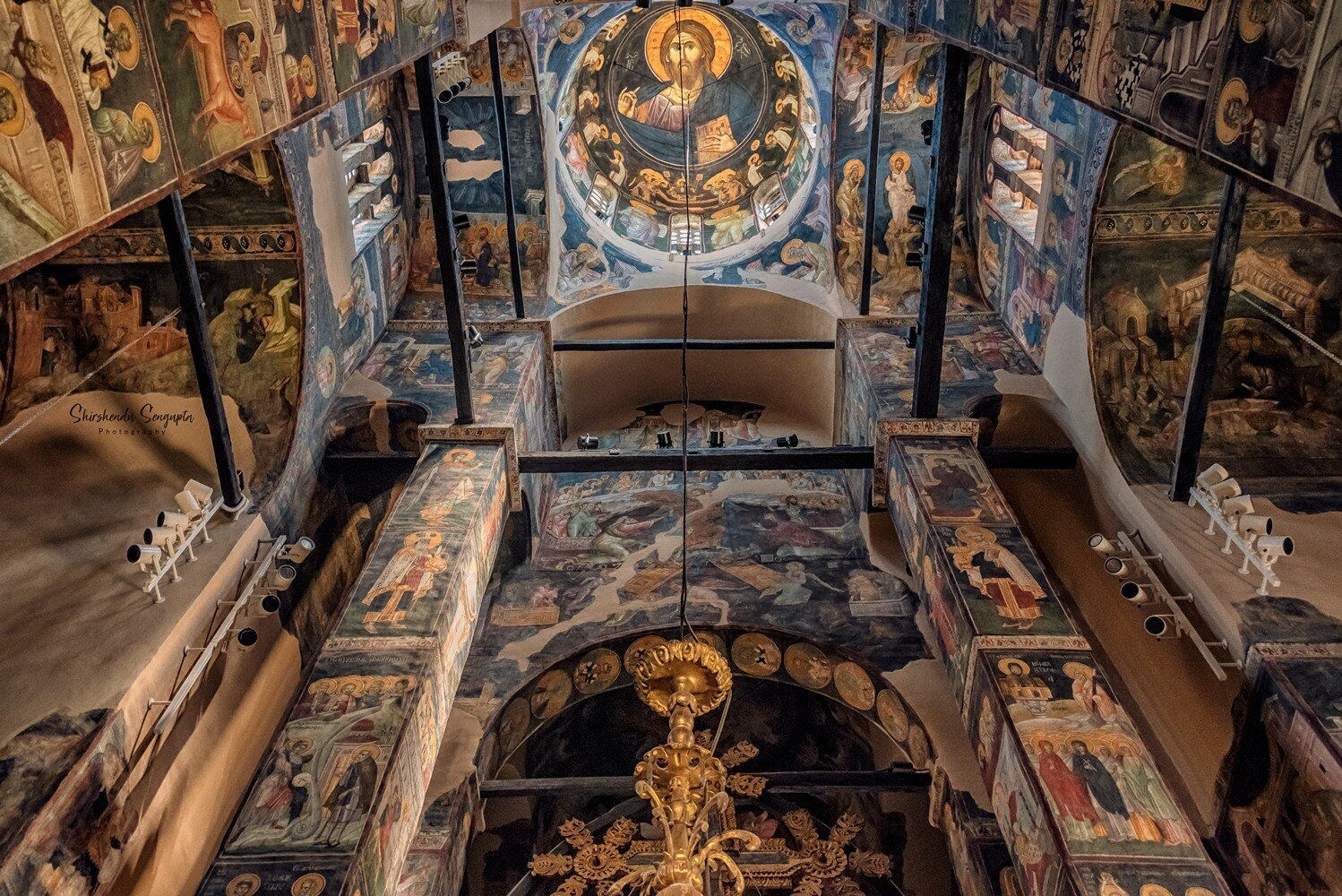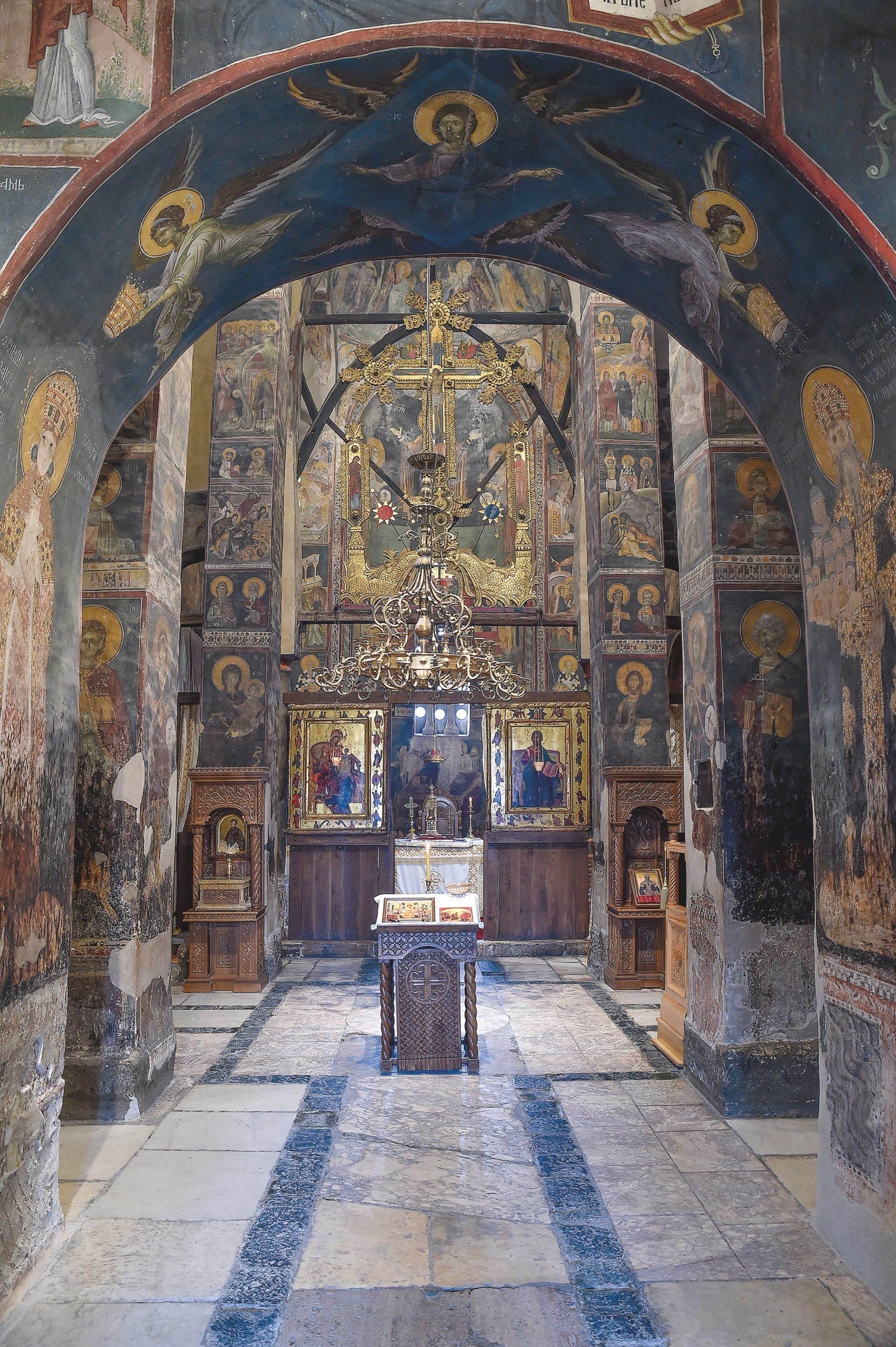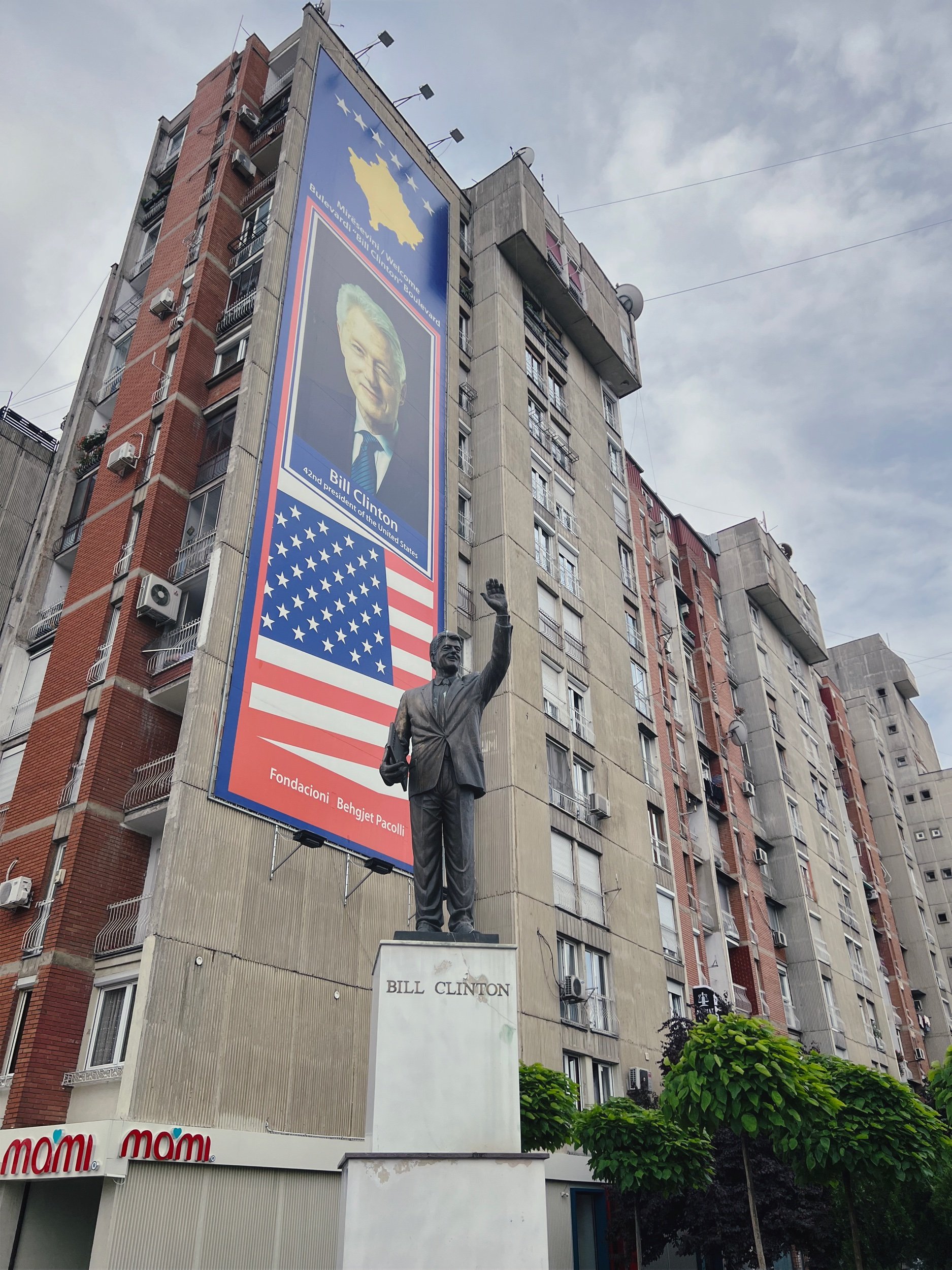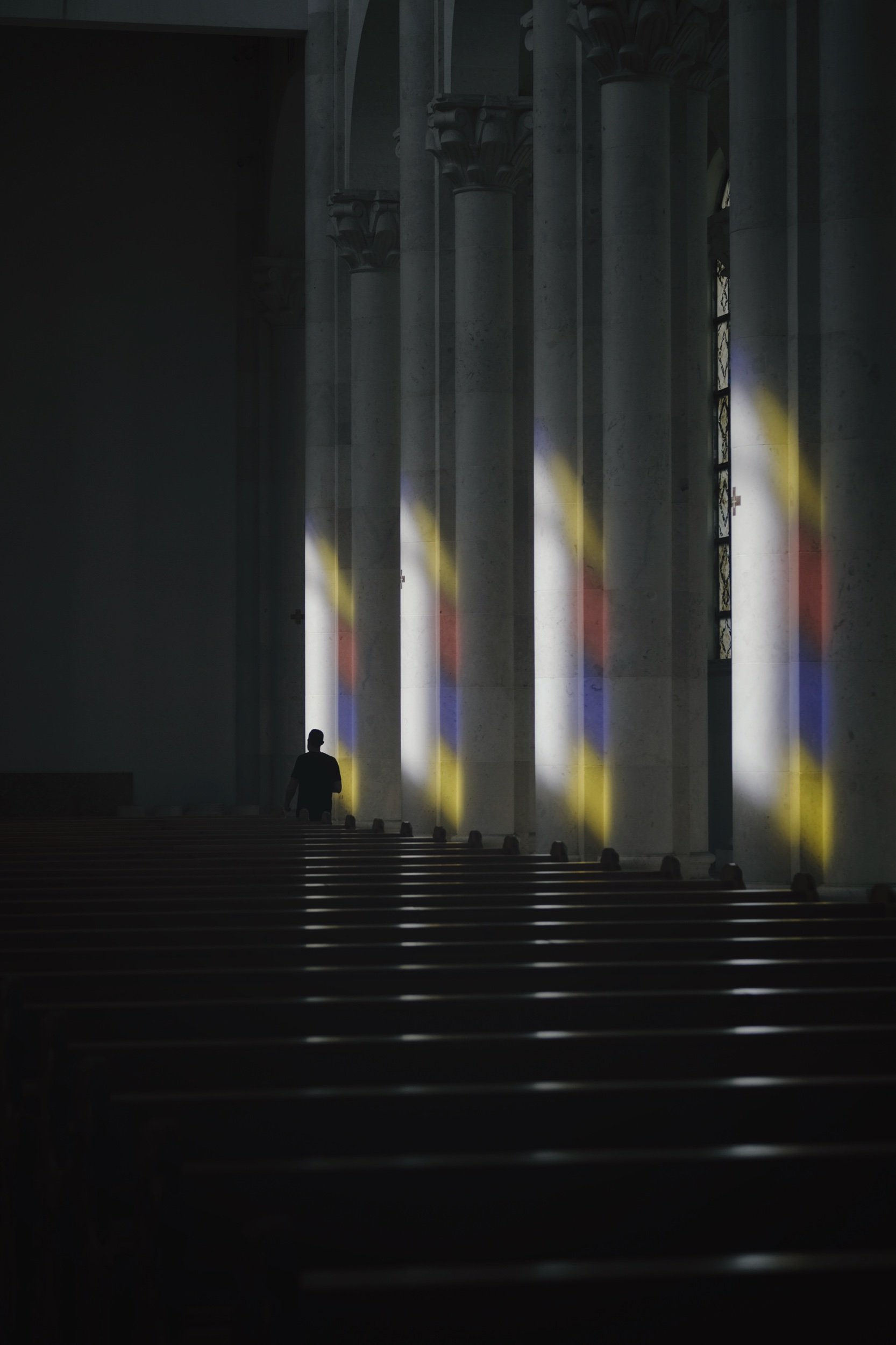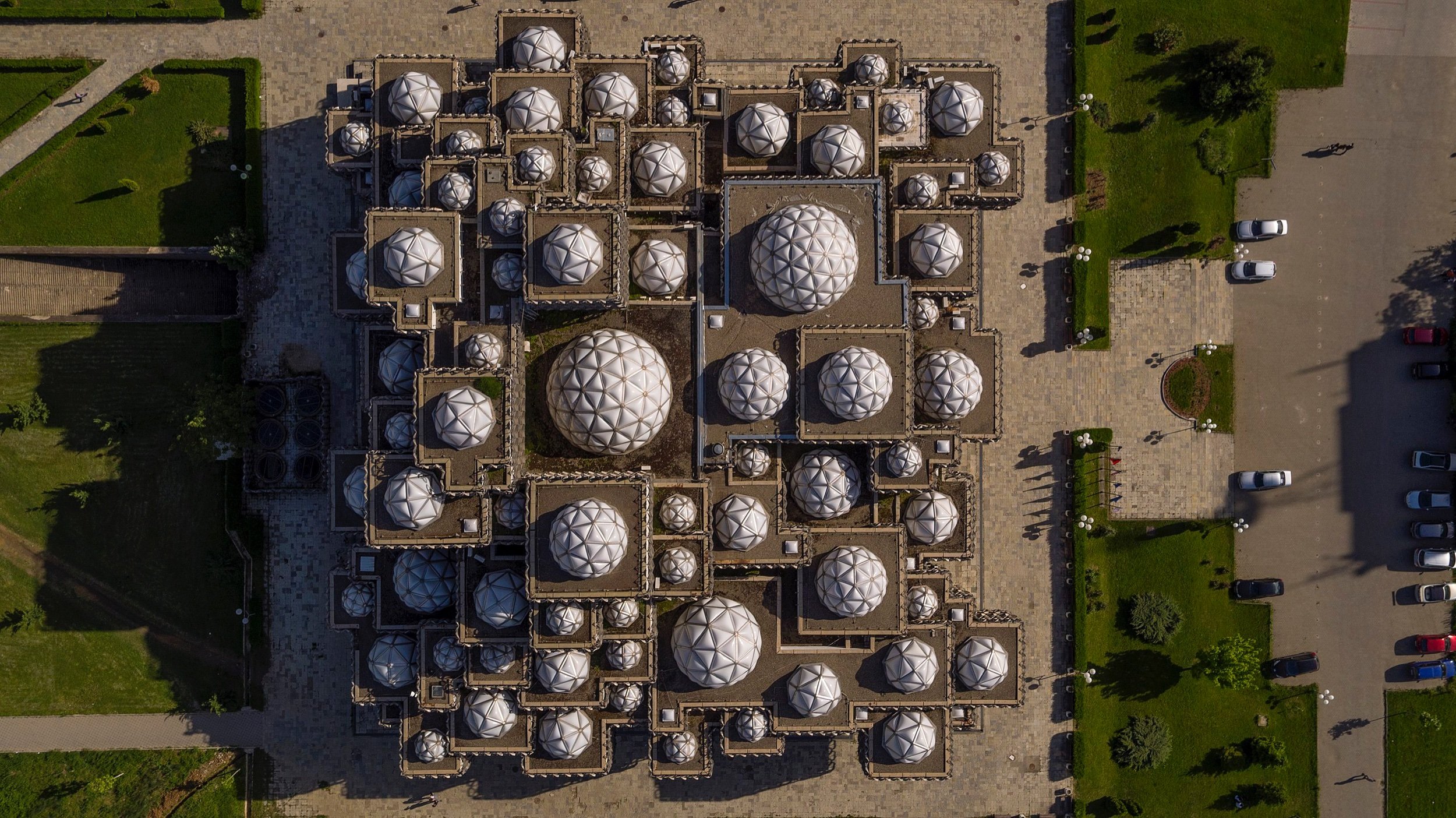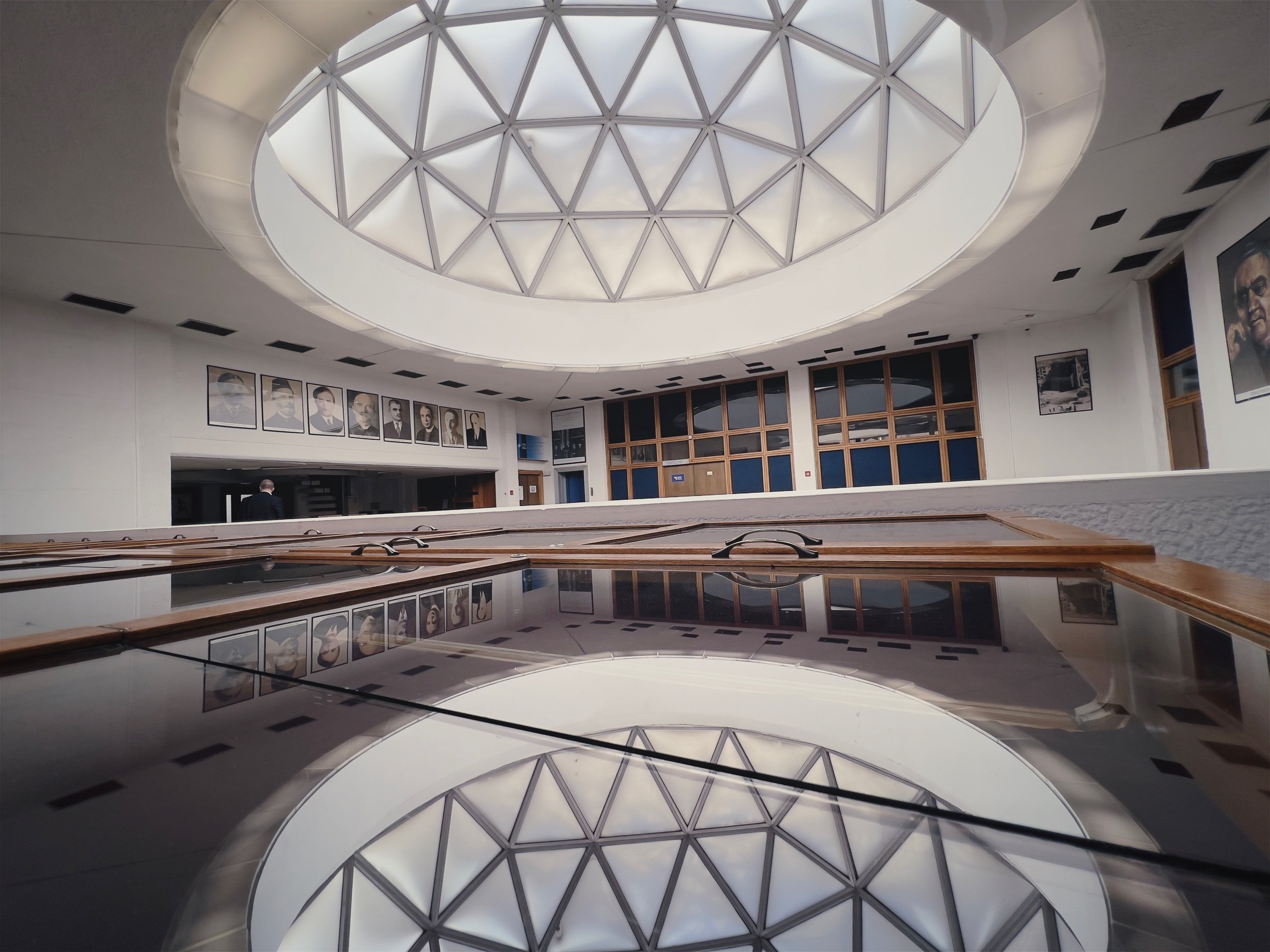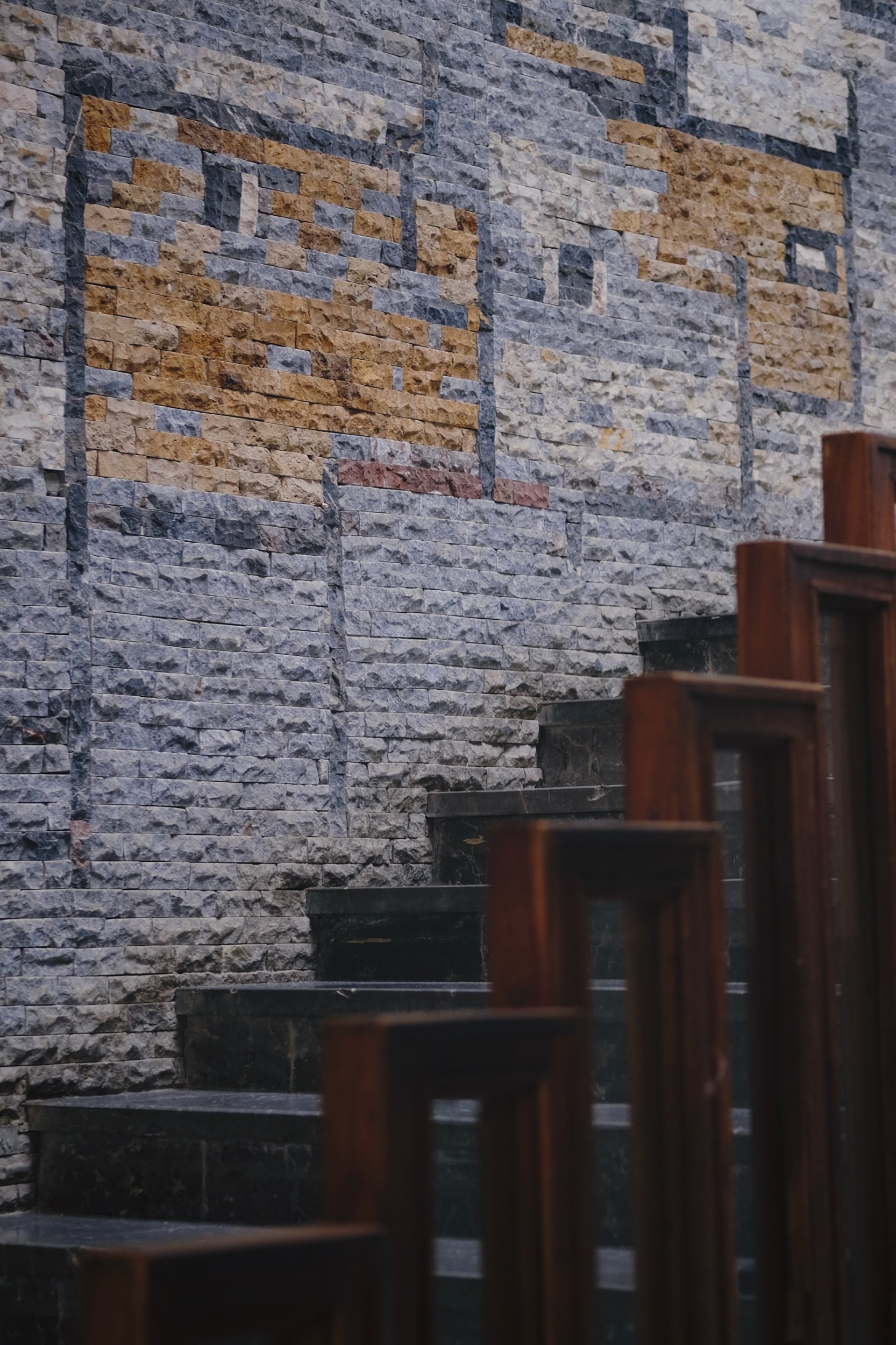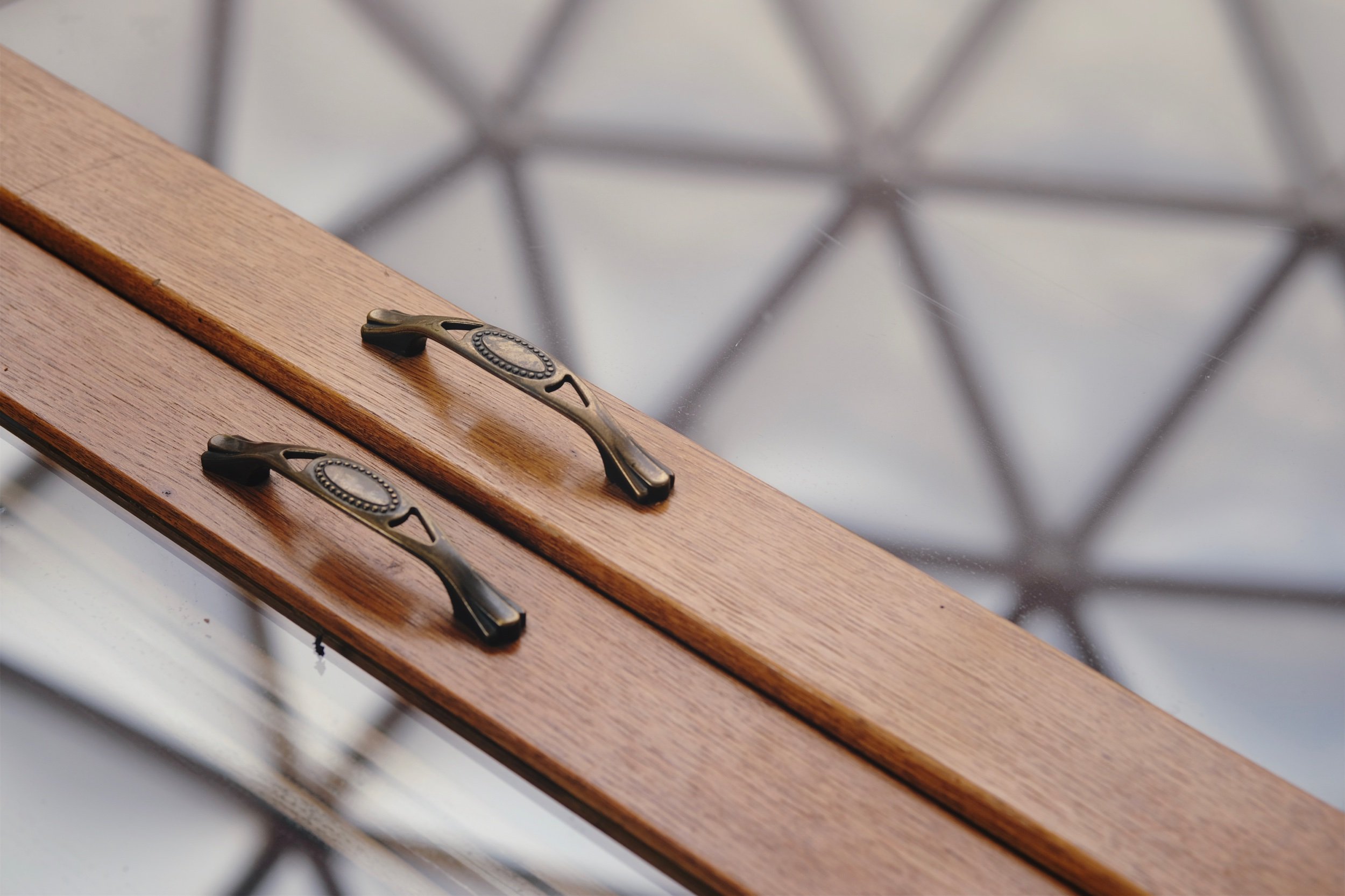Pristina, Kosovo
The familiar feelings of Day 1 in a new part of the world: Relief, excitement, exhaustion.
I had very few specific expectations of Kosovo. The first impression upon arriving was clear: Youth. Granted, we are staying near the national university, but Kosovo is the youngest country in Europe and you feel it immediately. The sidewalks and cafes are jammed with twenty-somethings.
Our first morning we got a leisurely macchiato at Dit’ e Nat’, windows wide open so we could hear the rain on the tiles in the back garden. At the table to our right a small orange cat curled up on a pillow; to our left, a student rolled his own cigarettes. Everyone here seems to smoke.
We took a cab twenty minutes south to the Serbian enclave of Gračanica. The driver, Albanian as 95% of the country is, beamed when he heard we were from New York. “You’re in second house! Come on! When you say you are from USA, in Kosovo, you are in second house!” It’s complicated traveling as an American in some places, but not in Kosovo, it seems.
We were headed to the Gračanica Monastery. Built in 1321 (!), it contains a jewel box Serbian Orthodox church. The modest footprint allows the taller spaces to feel like they soar. Every inch of the interior is covered in intricate frescoes. No cameras were allowed in so I’ll settle for an exterior photo and what I could grab from the web.
The twenty nuns who live in the monastery also run a small shop selling farmyard eggs, cheeses, juice, pastries, and plum brandy. We left with a bottle of fresh squeezed pear juice and a box of small sandwiched donuts stuffed with sour cherries, eating them huddled under the monastery’s front arch to stay dry. Rule to live by: Always get the nun pastries.
Back to Pristina for a visit to the Peace Corps offices with our friends Marta and John. Marta was in the country’s first cohort of 25 volunteers. We had coffee with the team of locals that opened the operation nine years ago. They joked with her about how she got the most posh home stay setup — her host family had the village’s only pool, filled with a garden hose, where local kids would gather. They told us about the first and only time they’ve invoked the program’s evacuation plan, gathering the Corps volunteers from across the country in under five hours to send them back to the States when Covid hit. The team left an overwhelming impression of competence, dedication, pride, and good humor.
Back onto the street for a few standard stops. The Bill Clinton statue alongside Bill Clinton Boulevard, with its comically oversized hands, and a gown store next door called simply “Hillary.” The Mother Teresa cathedral, underwhelming in size and ornament, presumably as she would have wanted it.
And finally the Byzantine/Turkish/brutalist national library, with its small pack of stray dogs on the front steps. Anna, Marta, and John humored me as I wandered the empty rooms. (Marta, as it happens, hosted a spelling bee in the main hall while here for Peace Corps.)
What a gorgeous building. It opened in 1982, and it’s roof is peppered with 99 translucent domes of varied size. The aerial image below, from Wikipedia, gives you a sense; the rest are mine.
Drinks before dinner were with three young Kosovars that Marta knew as kids. All spoke impeccable English. One each works in graphic design, market research, and sales. Two work for German companies, including the salesperson selling TV packages to Germans, and apparently a growing share of young Kosovars are learning German for access to jobs.
Phew. It’s has been a whirlwind day. Aside from the individual sites, the most lasting impression has been seeing overt ethnic politics in a way I, naively, have not before. The main pedestrian mall flies the Kosovo and Albanian flags. Billboards of men in military dress exalt the Kosovo Liberation Army, the ethnically Albanian force that led resistance to Serbia in the 1990s and is still a force in national politics. A big mural of the Ukrainian flag betrays obvious unease about the potential parallels with Russia’s invasion. I have nothing insightful to add about a situation much more complicated than a 36-hour trip can uncover.
Tomorrow it’s off to Montenegro, five hours by car.
